Kings and Queens of the Wild: Unveiling the Types of Big Cats and the Undisputed Champion
Types Of Big Cats | Biggest Cat | The term “big cat” ignites our imagination, conjuring images of powerful predators with sleek fur and piercing gazes. These magnificent creatures reign supreme at the top of the food chain, playing a vital role in maintaining healthy ecosystems.
This comprehensive guide delves into the captivating world of big cats, exploring their diverse species, characteristics, and the undisputed champion in terms of size:
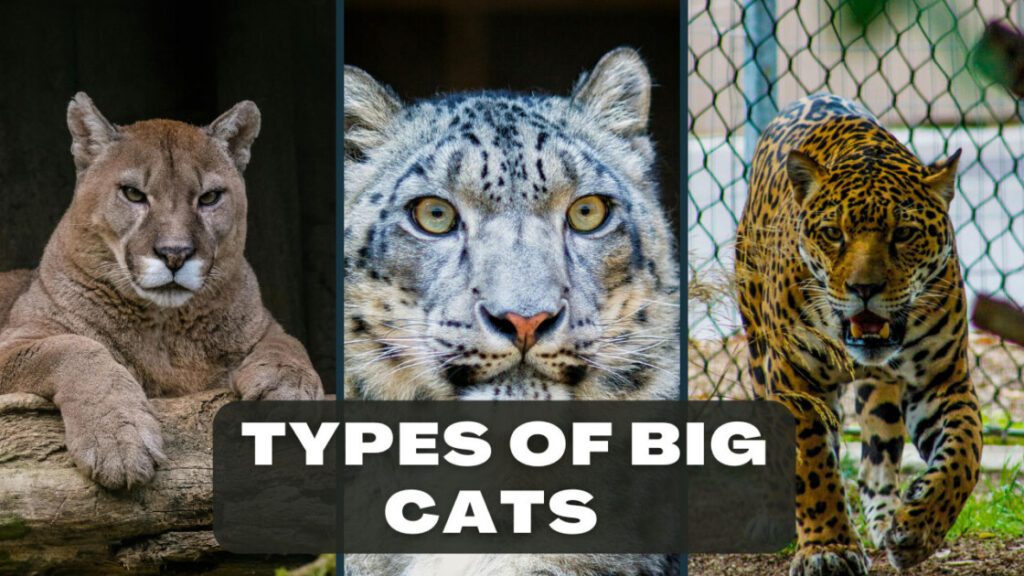
Table of Contents
The term “big cat” is not a formal taxonomic classification but rather a designation for several large feline species that share certain characteristics. These characteristics include:
- Roar: Unlike most other felins, big cats can roar due to a unique adaptation in their larynx, allowing them to communicate over long distances.
- Size: Big cats are generally larger than other felines, with powerful bodies and robust skulls.
- Hunting Prowess: They are apex predators, equipped with sharp claws, teeth, and exceptional senses for hunting prey.
However, not all large cats belong to the same taxonomic group. Here’s a breakdown:
- Genus Panthera: This genus comprises five of the most recognizable big cats – lion, tiger, jaguar, leopard, and snow leopard. They share a common ancestor and possess the ability to roar.
- Non-Panthera Big Cats: Cheetahs and cougars are classified in separate genera but are still considered big cats due to their size and role as apex predators.
Striking Stripes and Regal Roars: Unveiling the Panthera Genus
Lion: The Social King (Panthera Leo)
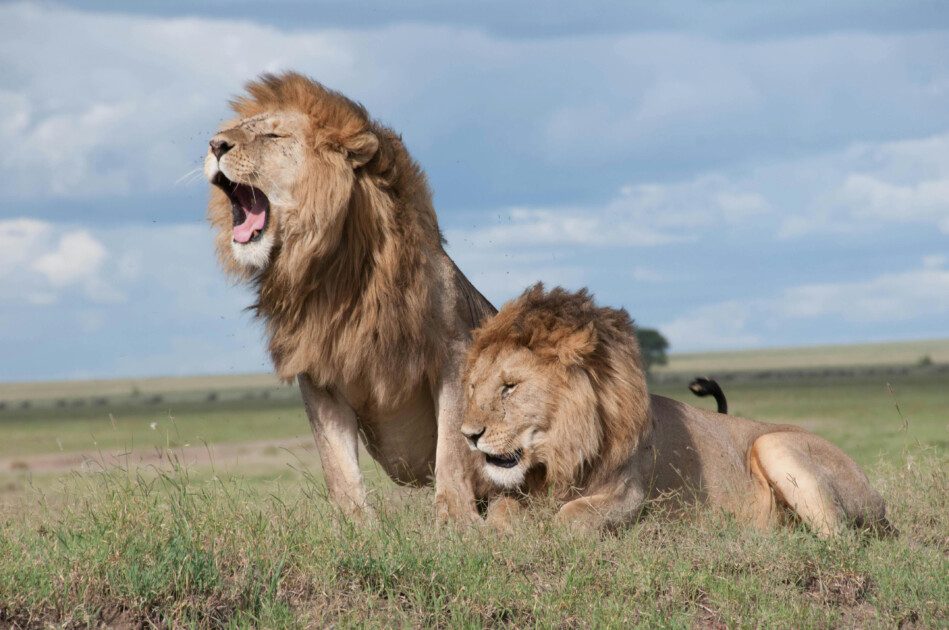
- Social Structure: Lions are the most social big cats, living in prides that typically consist of several related females, their offspring, and one or a few males. This social structure allows them to take down larger prey and defend their territory more effectively.
- Physical Characteristics: Male lions are recognizable by their impressive manes, which vary in color and size depending on the subspecies. Females are generally smaller and lack manes. Both sexes have a powerful build and a distinctive roar.
- Habitat: Lions historically inhabited most of Africa and parts of Eurasia. However, their habitat range has shrunk significantly due to human encroachment. Today, they are primarily found in sub-Saharan Africa and a small population in Gir Forest National Park, India (Asiatic lion).
Tiger: The Solitary Hunter with Stripes (Panthera tigris)
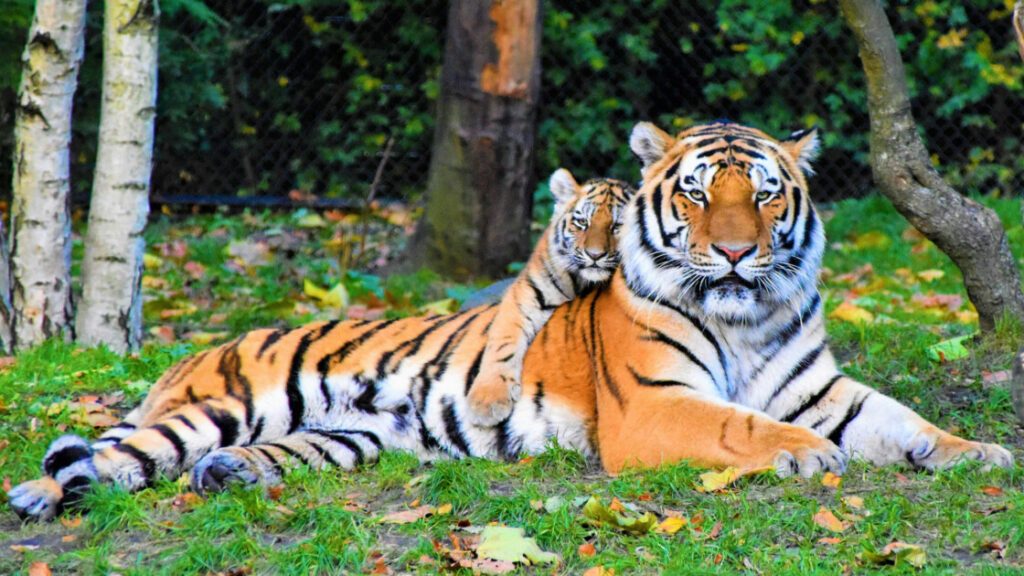
- Solitary Hunter: Unlike lions, tigers are solitary animals, except for mothers raising their cubs. They are skilled hunters with excellent eyesight and powerful muscles, allowing them to take down large prey like deer, wild boar, and even gaur (large wild bovines).
- Striped Splendor: Their orange fur with distinctive black stripes is iconic and provides excellent camouflage in their natural habitat.
- Habitat: Tigers are native to Asia, with various subspecies inhabiting different regions. Sadly, all tiger subspecies are classified as endangered or critically endangered due to habitat loss, poaching, and prey depletion.
Jaguar: The Powerful King of the Jungle (Panthera onca)
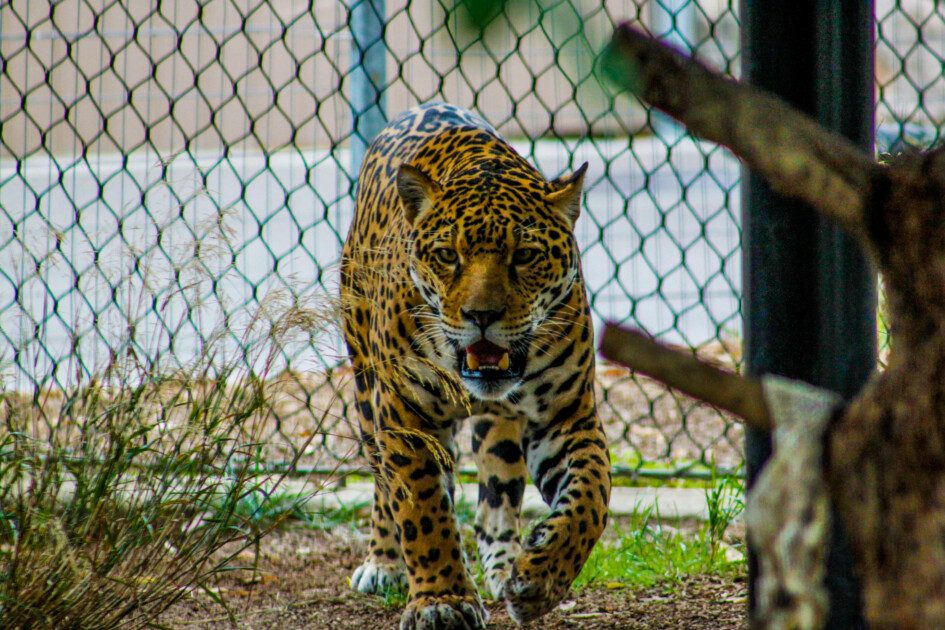
- Apex Predator of the Americas: The jaguar is the largest cat species in the Americas and the third largest big cat globally. With a powerful build and a spotted coat, it reigns supreme in its rainforest habitat.
- Solitary and Secretive: Similar to tigers, jaguars are solitary animals except during mating season. They are known for their impressive swimming skills and often hunt prey near water sources.
- Habitat: Jaguars historically ranged from southern Arizona and Texas in the United States to northern Argentina. Today, their population is fragmented and threatened by habitat loss and conflict with humans.
Leopard: The Agile and Adaptable Cat (Panthera pardus)
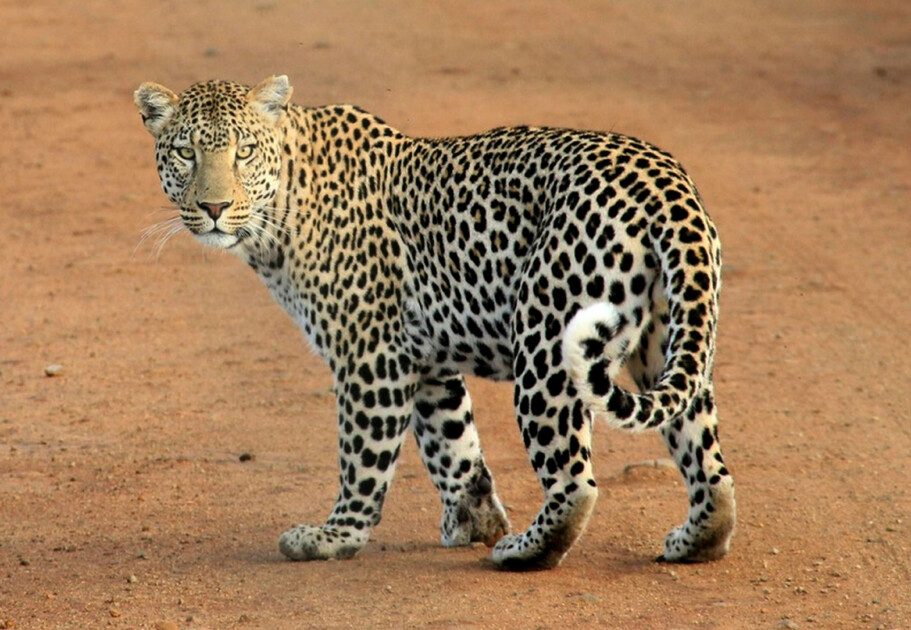
- Spotted Master of Camouflage: Leopards are the most adaptable big cats, thriving in various habitats like rainforests, savannas, and even deserts. Their spotted coat provides excellent camouflage, allowing them to stalk prey effectively.
- Solitary and Stealthy: Leopards are solitary hunters known for their agility and climbing skills. They often cache their kills in trees to avoid competition from other predators.
- Subspecies and Distribution: Several leopard subspecies exist, with varying coat patterns and sizes. They are found across Africa and parts of Asia, though populations have declined significantly due to habitat loss and poaching.
Snow Leopard: The Elusive Ghost of the Mountains (Panthera uncia)
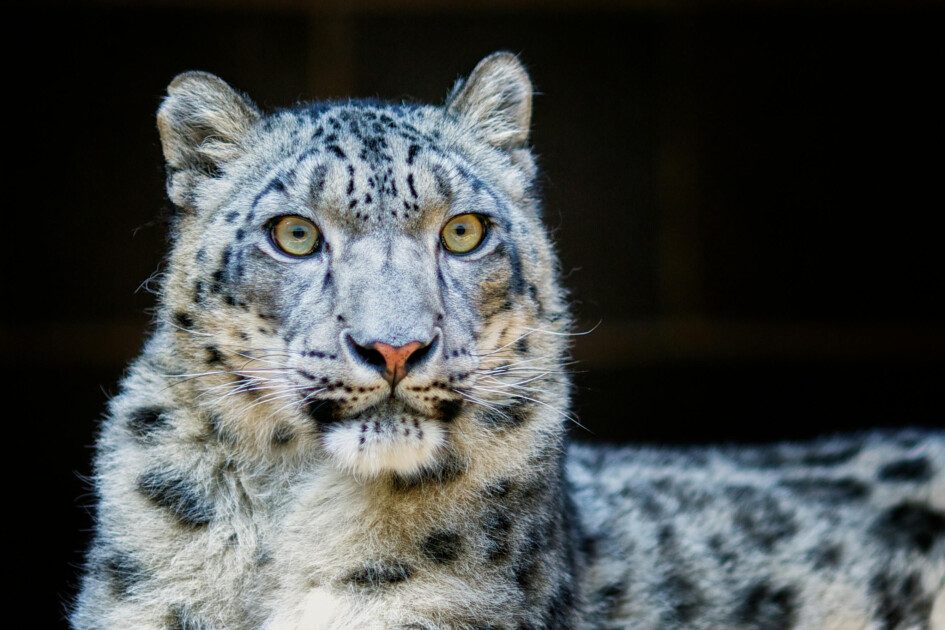
- King of the High Mountains: Snow leopards are the most high-altitude dwelling big cat species, adapted to survive in the harsh conditions of the Himalayas, Tibetan Plateau, and other mountainous regions of Central Asia.
- Thick Coat and Powerful Build: Their thick fur with distinctive rosettes provides excellent camouflage in their snowy habitat. Snow leopards are smaller than other Panthera cats but possess a powerful build and exceptional agility, allowing them to navigate treacherous mountain terrain.
- Endangered and Elusive: Snow leopards are classified as endangered due to habitat loss, poaching for their fur and body parts, and competition for prey from livestock. Their elusive nature makes them difficult to study and conserve.
Beyond Stripes: Exploring Non-Panthera Big Cats
Cheetah: The Fastest Land Animal (Acinonyx jubatus)

- Built for Speed: Cheetahs are the fastest land animals on Earth, reaching speeds of up to 70 mph (112 km/h) in short bursts. Their slender build, long legs, and flexible spine are all adaptations for speed.
- Hunting Strategy: Unlike other big cats, cheetahs rely on their speed to chase down prey, primarily antelopes and gazelles. They lack the powerful bite force of other big cats, so a successful chase is crucial.
- Vulnerable and Threatened: Cheetahs are the most vulnerable big cat species due to habitat loss, competition with other predators, and illegal wildlife trade. Conservation efforts are underway to protect these magnificent creatures.
Cougar: The Ghost Cat of the Americas (Puma concolor)
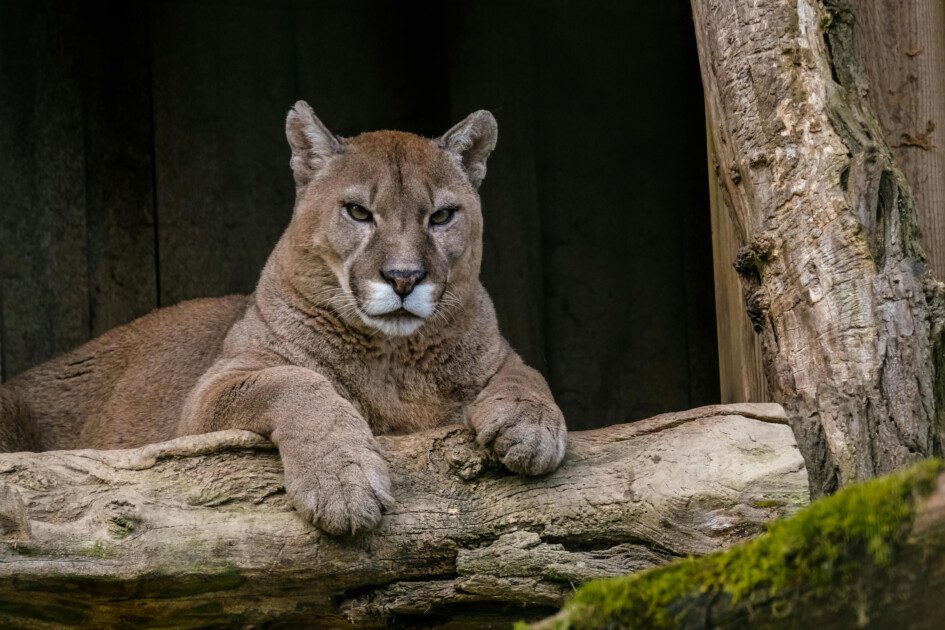
- Silent Stalker: Cougars, also known as mountain lions or pumas, are the second-largest cat species in the Americas after jaguars. They are solitary hunters with a reputation for stealth and agility.
- Adaptable Habitat: Cougars are highly adaptable and can thrive in diverse habitats, ranging from mountains and forests to deserts. Their wide range across the Americas has earned them the nickname “ghost cat” due to their elusive nature.
- Conservation Concerns: While cougars face some threats like habitat loss and conflict with livestock, their populations are generally more stable compared to other big cats. However, continued monitoring and conservation efforts are still necessary.
The Biggest Cat on Earth: Unveiling the Siberian Tiger
Now, let’s delve into the undisputed champion of size in the big cat kingdom: the Siberian tiger (Panthera tigris altaica).
Size, Strength, and Majestic Beauty
- Siberian Supremacy: The Siberian tiger, also known as the Amur tiger, is the largest cat species on Earth. Males can weigh up to 660 pounds (300 kg) and reach a body length of over 10 feet (3 meters), making them truly awe-inspiring predators.
- Adapting to the Cold: Their thick orange fur with dark stripes provides excellent camouflage in their snowy habitat. A layer of fat beneath the skin helps them retain heat in the frigid temperatures of the Siberian taiga.
- Solitary and Powerful: Siberian tigers are solitary hunters, relying on their immense strength and powerful bite to take down prey like wild boar, deer, and even brown bears. Their hunting prowess makes them a vital apex predator in the ecosystem.
Habitat, Hunting Strategies, and Conservation Concerns
- Fragmented Habitat: Siberian tigers historically inhabited a vast range across eastern Russia and parts of Northeast China and North Korea. Today, their habitat is fragmented and threatened by deforestation, poaching, and prey depletion.
- Solitary Hunting Techniques: Siberian tigers are ambush predators, relying on stealth and explosive bursts of speed to catch prey. Their powerful paws and sharp claws are deadly weapons.
- Conservation Efforts: The Siberian tiger is classified as endangered, with only a few thousand individuals remaining in the wild.
- International conservation efforts are underway to protect Siberian tigers. These efforts include:
- Establishing protected areas and corridors to expand and connect tiger habitat.
- Anti-poaching patrols and stricter legislation to deter illegal wildlife trade.
- Captive breeding programs to maintain a healthy tiger population and potentially reintroduce them into suitable wild habitats.
- Public education and awareness campaigns to raise support for tiger conservation.
The Big Cat Family: Challenges and Conservation Efforts
Big cats face numerous challenges in the modern world, threatening their very existence. Here are some key concerns:
- Habitat Loss: Habitat destruction due to deforestation, agricultural expansion, and infrastructure development is a major threat to all big cat species. As their habitat shrinks, they face competition for resources and increased human-wildlife conflict.
- Poaching: The illegal hunting of big cats for their fur, body parts (used in traditional medicine), and trophies is a significant threat. Stricter enforcement, education, and addressing the demand for these products are crucial.
- Prey Depletion: The decline of prey populations due to hunting and habitat loss can significantly impact big cats. Conservation efforts need to address the entire ecosystem, not just the apex predators.
- Human-Wildlife Conflict: As human populations expand and encroach on big cat habitats, conflict becomes inevitable. Livestock depredation and attacks on humans can lead to retaliation against these magnificent animals. Finding solutions that minimize conflict and promote coexistence is essential.
Importance of Conservation and Protecting Big Cat Populations
Big cats play a vital role in maintaining healthy ecosystems. As apex predators, they control prey populations, preventing overgrazing and ensuring a balance within the food web. Their presence also promotes biodiversity and supports healthy ecosystems.
Beyond their ecological importance, big cats inspire awe and wonder. They are cultural icons and symbols of strength, beauty, and the wild. Their loss would be a devastating blow to the natural world and a significant cultural loss.
- Also Read –
- Finding the Best Fit: A Guide to Pet Hospitals Including Banfield, BluePearl & More (International Focus)
- Top 10 Small Dog Breeds for Families: A Pet Lover’s Guide
- Secret Weapon for Pet Parents: Master Pet Supplies Plus Online!
- Prioritizing Your Pet’s Well-Being: A Global Guide to Preventative Pet Health, Including Michiana 2024-25
- Don’t Let Your Furever Friend Become Lost Forever: Badass Pet ID Tags, Free Options, and Microchip Must-Knows
Conclusion: Guardians of the Wild
Big cats are not just majestic creatures; they are vital players in the intricate web of life. Understanding the different types of big cats, their roles in the ecosystem, and the threats they face is critical for their conservation.
Through continued research, education, and dedicated conservation efforts, we can ensure the survival of these magnificent predators for generations to come. By protecting big cats, we safeguard the health of our planet and the awe-inspiring beauty of the wild world.
Big Cat FAQs: Unveiling the Kings and Queens of the Wild
What are big cats?
Big cats are a group of large feline predators with distinct characteristics like roaring, powerful builds, and specialized hunting adaptations.
How many types of big cats are there?
There are eight widely recognized big cat species: lion, tiger (including Siberian tiger), jaguar, leopard, snow leopard, cheetah, cougar, and clouded leopard (though the clouded leopard’s classification as a true big cat is debated by some).
What is the biggest cat in the world?
The Siberian tiger is the undisputed champion in terms of size.
What are lions known for?
Lions are social big cats known for their impressive manes (males) and cooperative hunting behaviour.
What makes tigers unique?
Tigers are solitary hunters with striking striped fur and exceptional hunting prowess. The Siberian tiger is the largest tiger subspecies.
Where do jaguars live?
Jaguars are the biggest cats in the Americas, known for their spotted coats and powerful swimming skills. Their habitat ranges from southern Arizona to northern Argentina.
What is special about leopards?
Leopards are the most adaptable big cats, thriving in diverse habitats and known for their agility and climbing abilities.
Are snow leopards endangered?
Yes, snow leopards are classified as endangered due to habitat loss, poaching, and competition for prey.
How fast can cheetahs run?
Cheetahs are the fastest land animals, reaching speeds of up to 70 mph in short bursts.
Where do cougars live?
Cougars, also known as mountain lions, are found throughout the Americas and are highly adaptable to various habitats.
What are the biggest threats to big cats?
Habitat loss, poaching, prey depletion, and human-wildlife conflict are the major threats facing big cat populations.
Why is big cat conservation important?
Big cats play a vital role in maintaining healthy ecosystems and are cultural icons worth protecting.
How can I help conserve big cats?
Support reputable conservation organizations, raise awareness, reduce your demand for wildlife products, and be a responsible eco-tourist.